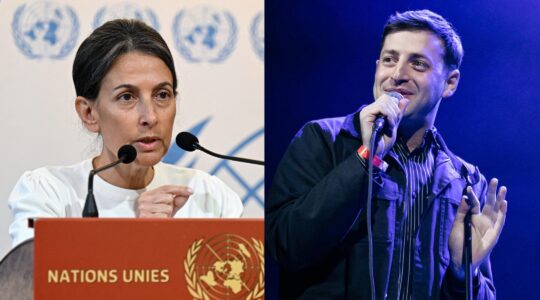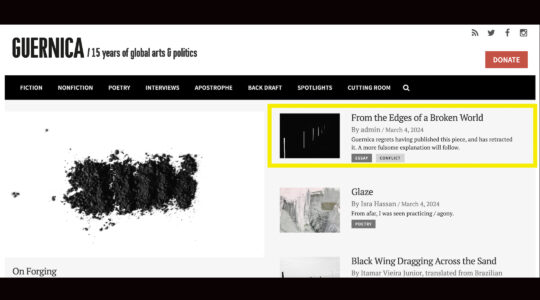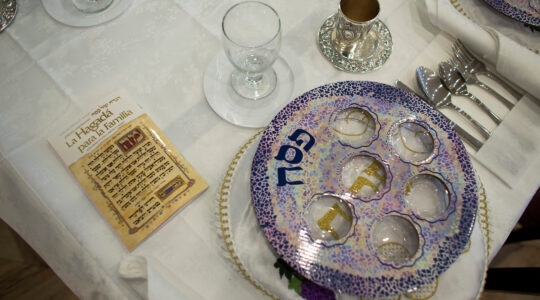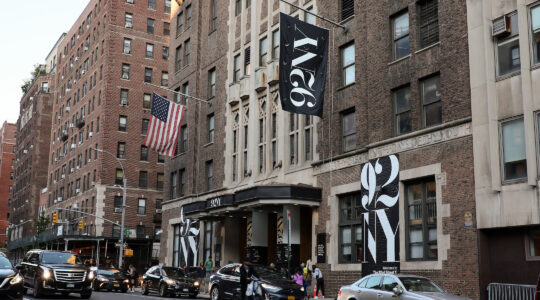JERUSALEM (JTA) – A baby carriage was Mirjam Waterman’s vehicle of salvation during the Holocaust.
A member of the Dutch resistance during World War II, Waterman used to pick up infants whose parents were being deported to Westerbork concentration camp and deliver the babies to the Amsterdam train station. She would wait there for her liaison, then deliver the children to families and institutions for hiding.
Waterman was caught and deported to the Bergen-Belsen concentration camp. After she was liberated, she worked in 1946 to have the children returned to Jewish authorities and moved to Palestine.
Waterman is one of about 50 women featured in the Yad Vashem Holocaust memorial’s exhibit “Spots of Light: To Be a Woman in the Holocaust.”
Rather than focus on what the Nazis did to women, the $500,000 multimedia exhibit focuses on their actions and responses in the most extreme and difficult of circumstances.
“This is the first international exhibit that’s ever been created to focus solely on the lives of women in the Holocaust,” said Professor Judy Baumel-Schwartz, the exhibit’s historical adviser and chairwoman of the Contemporary Jewry program at Bar-Ilan University. “All the other exhibits have included women, but not focused primarily on the lives of women. What we tried to do is to focus on various gender-related aspects of women’s lives, not just on their deaths.”
More than 3 million women, including girls, are thought to have died in the Holocaust. Women of child-bearing age were the Nazis’ main target in their quest to annihilate world Jewry. The exhibit includes both survivors and those who perished in the genocide.
Yehudit Inbar, the exhibit’s curator, says women in the Holocaust were not passive, but they usually could not flee or fight as some men did because they needed to take care of children, aging parents and other community members.
“What I say in this exhibit is that actually, it’s not only that they stayed but they made their way to death so meaningful, so human,” Inbar said. “They were at their best from the aspect of humanity.”
In the ghettos and camps, women tried to maintain basic hygiene in extreme conditions and did what they could to scrounge for money to feed their children.
The exhibit consists mostly of text and photos, which contrast sharply with the multidimensional and extraordinary stories of the women. Their stories are told through letters, diaries, artwork, book excerpts and some personal artifacts.
Included in the display is a letter written by an Auschwitz prisoner to her husband, also an Auschwitz prisoner, as she waited to be taken to the gas chamber.
“You’ve been the greatest happiness of my life, and I would gladly give my life to save yours,” the letter says. “Thank you darling with all my heart for the devotion, love and joy you’ve given me. Always remain what you are, the greatest unbreakable hero. I shall think of you and pray for your safety until my last breath.”
Sabine Alzon is one of 10 women survivors featured in a video exhibit by renowned Israeli artist Michal Rovner. Alzon fought with her husband in the underground resistance in France.
Her daughter, Holocaust survivor Berthe Badehi, a 75-year-old Jerusalemite, was 9 when the war reached the family. She spent three years living with a Catholic family in the Alps while her parents fought in the resistance.
“It’s so important to speak of the women during the war,” said Badehi, who volunteers at Yad Vashem. “For many families, if the women had not been there, the men would have been much more in danger.”
She said her mother was “the backbone of the family.”
The exhibit runs through March.





